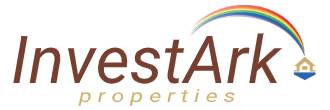Written By: Randy Langenderfer
The coronavirus pandemic has devastated economies globally and has had lasting effects on how we conduct business.
So what should you do when looking to invest in the multifamily markets during a challenging time?
First, the need for housing will always exist, and the supply-demand ratio will continue to be stronger as a limited number of new constructions are coming up.
In fact, during a recession people opt to move from homes to cheaper houses to save on housing costs. Therefore, the multifamily market remains a strong investment vehicle.
New projects mainly focus on higher-end products with more expensive rents to justify the rising cost of land, materials, and labor. As a result, developers construct very few, if any, mid-priced properties, and the demand for properties in the middle range has been outpacing the supply.
Many real estate investors are now moving out of hospitality, office, and retail investment towards the multifamily market, increasing the demand.
Furthermore, cap rates and interest rates are likely to remain low for the foreseeable future. Low rates will help maintain property values even with limited rent growth over the next few years.
Baby boomers want to downsize and leave the maintenance issues for someone else.
Millennials want to live close to their workplaces and not commute from the suburbs.
Also, most Millennials have good paying jobs and are saddled with large amounts of student debt requiring them to rent. Because, they can’t pull together the down payment to own a home.
Lastly, real estate investing is a better hedge for inflation.
The multifamily market would be the best asset within real estate as inflation rises, property values also increase, and the amount landlords can charge for rent again rises. Therefore, your rental income earning potential increases over time.

What is a multifamily property, and is it a good investment?
A multifamily property is a real estate property generally considered to have more than four units and can ultimately house more than one family. It can be a quadplex or an apartment building with hundreds of units.
A multifamily property is considered a relatively safe investment compared to other real estate asset classes. It’s because even during challenging economic times, people still need a place to live. During a recession, people find it wise to sell their homes and move into rental houses.
Real estate investing has minted multimillionaires
Donald Trump is one of the most well-known real estate billionaires, yet he doesn’t even crack the top-10 list of the wealthiest real estate investors in the US.
According to the Forbes 400 list, an elite group of billionaire real estate investors include; Donald Bren, Sun Hongbin, Stephen Ross, Sam Zell, Leonard Stern, John Sobrato, Sheldon Solow, Jerry Speyer, Igor Olenicoff, Jeff Sutton, among others.
Why do the wealthy heavily focus on real estate?
The cash flow, favorable tax treatment and appreciation are key advantages of real estate investment that differentiate it from other investments.
One common theme among the top real estate moguls is that they make the bulk of their investments developing real estate investments in major cities.
That said…

What should you consider when buying a multifamily property?
The main objective when selecting a multifamily market is to identify an ideal are in which to invest.
Here are things to consider when determining your market.
1. The population and population growth
You want to consider a market big enough that will always have a large pool of interested renters or buyers.
Experts agree on the population size of 200,000 people, and you also want to see some population growth. The net population creates demand, so avoid areas where the population growth rate is declining.
A decent pool for potential tenants guarantees a consistent rental income. Such cities are also likely to attract a diverse range of employers and businesses looking for a large enough pool of potential employees.
These factors are highly beneficial to any real estate investor.
2. Look at the job market
The second thing to consider when Choosing a multifamily market is the job market.
Go beyond a low unemployment rate and ensure the job growth rate is higher than the national average. Compare job growth in a particular area with the national one-year job growth rate. (1.5% as of June 2019).
For example, as of May 2019, Orlando, Florida had job growth of 3.1%, and Dallas-Fort Worth-Arlington had job growth of 2.9%. Job growth translates into demand for multifamily houses and a leading indicator of the rental market condition in an area.
Such indicators bode well with the multifamily real estate market because they signify a constant rental property demand.
Consider a market with a wide range of employment sectors.
3. Job diversity
Job diversity is also another factor you should consider in choosing a multifamily market. Avoid cities that rely on a single large employer or industry, especially jobs in manufacturing or cyclical sectors such as coal, steel, oil, etc.
Manufacturing jobs are more vulnerable to nature and prone to being outsourced.
Investing in such a market is inherently risky since the market could take a big hit should the large employer close down or the single industry experiences a slowdown.
Instead, look for cities with more jobs in various sectors such as finance, healthcare, education, and business services – which tend to be more stable.
4. The median income
The median household in a city indicates the strength of its rental market. Rent is often a significant expense for most people, therefore it is critical that you invest in a market with a moderate to high-income demographic.
Median income helps you weed out low-income areas not suitable for multifamily investing for beginners.
5. Safety
Most people neglect safety when selecting a multifamily market.
However, the level of safety in a market directly correlates with its suitability for real estate investing. A low crime rate leads to positive tenant experiences and reliable rental income.
On the contrary, areas riddled with a high crime rate tend to attract many delinquent renters. Investing in such a housing market means dealing with a myriad of property management issues.
So, always ensure to check out crime rates in an area before you invest.
6. Analyze the neighborhood
Explore the neighborhood that you could invest in. Ideally, you should narrow your target list down to cities that boast of all essential amenities.
Amenities include but are not limited to hospitals, schools, public transport, and proximity to major roads.
7. Net absorption
Net absorption measures the net change in commercial space supply in a given market over a specific period. It’s calculated by deducting commercial space tenants have vacated and made available on the retail space market from the total space leased up.
Is there overbuilding? If people are building too many properties, eventually not enough people will fill in the market, then overbuilding will ultimately result in lower rents, more competition, and higher vacancy.
Above all, before picking a multifamily market to invest in, focus your time and energy in education yourself – and that includes items mentioned above.
Also, find mentoring groups you can join and educate yourself about the market.

Mistakes to avoid when researching the multifamily market
When dealing with multifamily investing, there are many pitfalls you should avoid. Some grave mistakes you should avoid doing in picking multifamily markets are:
- Not understanding the local rental laws and how they could affect your investment.
- Solely relying on the multifamily property data and neglecting other macro trends.
- Ignoring similar rental properties to get an idea of how much you should charge for rent.
Bottom line
Multifamily market research can either make or break your real estate investment. That’s why you need a straightforward approach and a set of parameters and objectives.
However, applying these tips should help you pick multifamily market research and start investing in real estate.
At InvestArk Properties we can help you figure out everything you need to know about investing in multifamily syndications as a passive investor. Schedule a 30 minute call with us so we can get you started on your journey towards financial freedom!
Looking for more information about real estate syndication? Check out more blog articles here!
Sign up for InvestArk Properties Newsletter (enrollment at bottom of page link to left) so that you have access to our future syndication deals.
